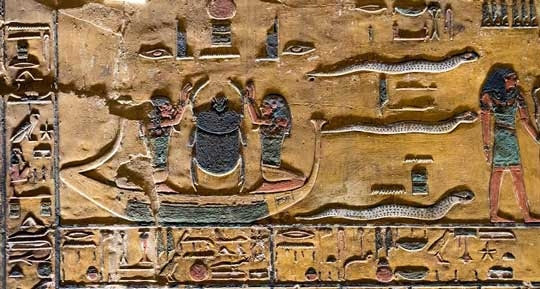|
Often I feature animals that appear in my books, and this is no exception. In my novel, Savage, Samuel Inwood has several interesting encounters with "scarab beetles," which is the family that includes dung beetles. And since I think dung beetles are so fascinating, I'm excited to tell you about them! So what the heck is a Dung Beetle? Well, simply stated, dung beetles are beetles that like dung. They seriously like dung. They like it so much that they either eat dung exclusively or just part-time (kind of like I'm a part-time vegetarian). They live world-wide (except for Antarctica). They are broad, stocky beetles in the family, Scarabaeidae (scarab beetles). And... did I mention that they like dung? A few years ago, Trish and I were hiking in the Flint Hills of eastern Kansas (midwest USA). We came across this extremely busy beetle, working very hard to roll his prized dung ball through the grass to some unknown destination (my photo of it is below). Since then, I have become a fan of these little guys. Amazing facts about Dung Beetles There are 8,000 known species of dung beetles, and they are categorized based upon the way they use dung. They belong to three groups: rollers, tunnelers, and dwellers. You guessed it, the rollers carve out a piece of dung from a larger pile, shape it into a ball, and roll it away. Then they bury it somewhere so they have a snack for later, or so they can lay their eggs in it, thus providing a first yummy meal to their young. The tunnelers burrow into the ground beneath the larger dung pile and simply pull some of the dung down into their hole. And finally, the dwellers burrow into the large dung pile and set up residence within the pile itself. A dung beetle walks into a bar... "Is this stool taken?" Sorry, that was a crappy pun. Ancient Egyptians were apparently very fond of dung beetles. One of their myths was that a giant dung beetle kept the Earth revolving like a huge ball of dung. So they linked dung beetles to Khepri, the Egyptian god of the rising sun. Due to people's fascination with ancient Egypt, scarab beetles are now often seen in jewelry and other types of ornamentation. Although dung beetles don't look very aerodynamic, they are actually good flyers. They fly around searching for nice piles of dung. As they fly, they can use their antennae to catch a whiff of fresh dung from a considerable distance. They prefer fresh dung, as it is easier to burrow into or roll into a ball. Dung beetles are strong. In fact, they are thought to be the strongest insect in the world. They can easily roll a dung ball ten times their own weight. And one species, Onthophagus taurus, can pull up to 1,141 times its own weight! This is the equivalent of an average-sized human pulling an object that weighs 205,000 pounds (93,000 kg). That's about the weight of 100 Toyota Corollas. Well, now I feel like a wimpy weakling. There are two reasons these beetles are so strong. First, they have to move dung! Second, the males often fight over the females. If a male enters a tunnel looking for a female and there is already another male there, then the two males lock horns and get into a pushing match until the stronger one pushes the other away. This is why many of the scarab beetles have impressive horns. When a male and female have a chance encounter at a local dung pile, they will often form a pair bond. Then they work together to carve out a nice dung ball, and they either work together to roll it away, or the female will simply ride on top while the male pushes the ball. But often another male will come along and try to steal a dung ball. So, if you see two dung beetles rolling a dung ball together in the same direction, it is likely a bonded pair. If you see two (or three) struggling to push it in different directions, there are two males fighting over the dung ball. Check out this BBC video on dung beetles (includes a silly way of showing how the males fight over dung balls). Dung beetles are amazing navigators! One species (Scarabaeus zambesianus) is the only animal known to be able to navigate using the polarization patterns of moonlight. And according to recent studies in Africa, dung beetles can actually navigate based on the position of the Milky Way galaxy! They can move in a straight line relative to the orientation of the Milky Way's bright streak across the night sky. Wow! So, the dung beetle deserves a place in the S.A.H.O.F. (Scrumtrulescent Animal Hall of Fame). FUN FACT: The word Scrumtrulescent was first used by Will Farrell in 2001, in a Saturday Night Live episode called "Inside the Actor's Studio." Since then, it has caught on (kind of) as a word that means: so great that any other word employed would be woefully insufficient. So it is another (new) way to say awesome! Photo Credits:
Dung beetle in the grass - Stan C. Smith Dung beetle in Egyptian Hieroglyph - KairoInfo4U on Flickr Horned Scarab Beetle - Carl Huchzermeyer on Flickr Two Dung beetles on dung ball - AfricaGeographic Dung Beetle and Milky Way Galaxy - Pinterest
1 Comment
|
Stan's Cogitations
Everyone needs a creative outlet. That's why I write. Archives
July 2024
|






 RSS Feed
RSS Feed